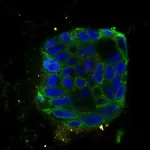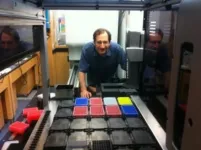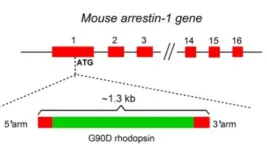(Press-News.org) Military physicians give patients whose military rank is higher better treatment than those who rank lower, according to a new study involving 1.5 million patient encounters. The findings provide evidence that the powerful enjoy better resources and support in a clinical context, often at the expense of the less powerful. “Our concern does not lie with the doctor-patient power imbalance itself, which is likely necessary for effective physician performance,” write the authors. “Rather, it lies with the inequitable variation in how that power is exercised, with the most vulnerable patients likely bearing the burden of this disparity, as has historically been the case.”
Despite its pervasive force in nearly all aspects of human social norms and systems, power is profoundly difficult to study with real-world data, limiting our understanding of how power dynamics play out in real-world settings. One particularly relevant and high-stakes power dynamic is the relationship between doctors and patients. This power differential generally favors the physician, who commands knowledge, clinical resources, and legal authority over patients who are reliant on their care. It is founded on the societal expectation that the physician will always act altruistically and ethically toward all patients. Stephen Schwab and Manasvini Singh investigated how variation in the doctor-patient power differential affects patient care and outcomes in the US Military Health System (MHS) – a setting that has a clear and well-entrenched hierarchy of power and thus provides a novel way to understand and quantify the elusive power differential between individuals. In this system, both doctors and patients are active-duty military, and each is assigned a clear rank. As a patient’s rank nears or exceeds that of the physician, the power differential should narrow, potentially influencing physician or patient behavior and, consequently, the care provided and patient outcomes.
Using a dataset encompassing 1.5 million patient encounters in MHS emergency departments, the authors found that “high-power” patients – those who outrank their physician – received more effort and clinical resources from their physician and experienced better health outcomes than “low-power” patients of the same rank. Patient rank promotions increased physicians’ effort, and the preferential treatment for high-power individuals lasted for years after retirement. Further analyses show that those with power may unwittingly divert clinical resources and effort away from lower-power patients. Schwab and Singh also found that low-power individuals often received less effort from physicians who had seen a high-power patient just prior to their own visit. Another important finding from the study was insight into how these power dynamics are affected by patient race or sex. The authors found that White physicians consistently gave less effort to Black patients. This effect was mitigated when Black patients had a higher rank, although the higher rank still only elevated the care they received to being at par with low-power White patients. Sex differences also had an effect. “Efforts remain necessary to better understand facets of power, including the failures of education and health care systems to address the myth that physicians are perfectly altruistic and not corrupted by power,” writes Laura Nimmon in a related Perspective. “Perhaps it is this myth that prevents medicine from meaningfully addressing this pernicious issue through institutional, educational, and organizational initiatives.”
***A related embargoed news briefing was held at 11:00 a.m. U.S. ET on Wednesday, 15 May, 2024, as a Zoom Webinar. Recordings of the briefing can be found here.***
END
Military physicians give high-ranking military patients preferential treatment over lower-ranking patients
2024-05-16
ELSE PRESS RELEASES FROM THIS DATE:
Tool use promotes foraging success and dental health in sea otters
2024-05-16
Using tools, like shells and rocks, to open their often thick-shelled mollusk prey increases foraging success in sea otters and protects their teeth from damage by allowing the animals to eat prey that would otherwise be difficult to obtain. The findings suggest that this behavior is a necessity for the survival of some otters in environments where competition is high and preferred prey is in short supply. Sea otters are well-known tool users. Aside from crushing prey with their teeth, sea otters have been observed using rocks, shells, human litter, and even the hulls of boats to bash open hard prey, including ...
Advances in priming B cell immunity against HIV pave the way to future HIV vaccines, shows quartet of new studies
2024-05-16
Scientists have made several advances in the design of a class of HIV vaccines that could offer broad protection against the virus, according to four new research papers published this week in Science, Science Translational Medicine, and Science Immunology. “The studies […] exemplify progress in the rational design of [germline-targeting] HIV-1 vaccines, and what is being learned will guide [germline-targeting] programs for inducing [broadly neutralizing antibodies] against other human pathogens,” Rogier Sanders and John Moore write in a related ...
Total energy cost of animal reproduction is higher than previously assumed
2024-05-16
The energy invested in animal reproduction is as much as 10 times greater than previously estimated when the metabolic load of bearing and caring for offspring is accounted for, according to a new study. The findings fundamentally challenge longstanding theories and biological models of animal growth and life histories. The act of reproduction is one of the largest energy investments an animal can make. This investment includes direct cost, the energy directly invested in the offspring themselves, and indirect costs, the energy expended to create, carry, and care for offspring before they are born. While the direct costs of reproduction are well understood, the indirect ...
Researchers discover new pathway to cancer cell suicide
2024-05-16
Researchers discover new pathway to cancer cell suicide
Chemotherapy kills cancer cells. But the way these cells die appears to be different than previously understood. Researchers from the Netherlands Cancer Institute, led by Thijn Brummelkamp, have uncovered a completely new way in which cancer cells die: due to the Schlafen11 gene. "This is a very unexpected finding. Cancer patients have been treated with chemotherapy for almost a century, but this route to cell death has never been observed before. Where and when this occurs in patients will need to be further investigated. This discovery could ultimately have implications for the treatment of cancer patients." They publish their ...
Researchers wrestle with accuracy of AI technology used to create new drug candidates
2024-05-16
CHAPEL HILL, N.C. – Artificial intelligence (AI) has numerous applications in healthcare, from analyzing medical imaging to optimizing the execution of clinical trials, and even facilitating drug discovery.
AlphaFold2, an artificial intelligence system that predicts protein structures, has made it possible for scientists to identify and conjure an almost infinite number of drug candidates for the treatment of neuropsychiatric disorders. However recent studies have sown doubt about the accuracy of AlphaFold2 in modeling ligand binding sites, the areas on proteins where drugs attach and begin signaling ...
Breaking bonds to form bonds: Rethinking the Chemistry of Cations
2024-05-16
A team of chemists from the University of Vienna, led by Nuno Maulide, has achieved a significant breakthrough in the field of chemical synthesis, developing a novel method for manipulating carbon-hydrogen bonds. This groundbreaking discovery provides new insights into the molecular interactions of positively charged carbon atoms. By selectively targeting a specific C–H bond, they open doors to synthetic pathways that were previously closed – with potential applications in medicine. The study was recently published in the prestigious journal Science.
Living ...
New gene delivery vehicle shows promise for human brain gene therapy
2024-05-16
In an important step toward more effective gene therapies for brain diseases, researchers from the Broad Institute of MIT and Harvard have engineered a gene-delivery vehicle that uses a human protein to efficiently cross the blood-brain barrier and deliver a disease-relevant gene to the brain in mice expressing the human protein. Because the vehicle binds to a well-studied protein in the blood-brain barrier, the scientists say it has a good chance at working in patients.
Gene therapy could potentially treat a range of severe genetic brain disorders, which currently ...
Finding quantum order in chaos
2024-05-16
If you zoom in on a chemical reaction to the quantum level, you’ll notice that particles behave like waves that can ripple and collide. Scientists have long sought to understand quantum coherence, the ability of particles to maintain phase relationships and exist in multiple states simultaneously; this is akin to all parts of a wave being synchronized. It has been an open question whether quantum coherence can persist through a chemical reaction where bonds dynamically break and form.
Now, for the first time, a team of Harvard scientists has demonstrated the survival of quantum coherence in a chemical reaction involving ultracold molecules. These findings highlight the potential of ...
Study suggests high-frequency electrical ‘noise’ results in congenital night blindness
2024-05-16
In what they believe is a solution to a 30-year biological mystery, neuroscientists at Johns Hopkins Medicine say they have used genetically engineered mice to address how one mutation in the gene for the light-sensing protein rhodopsin results in congenital stationary night blindness.
The condition, present from birth, causes poor vision in low-light settings.
The findings, published May 14 in Proceedings of the National Academy of Sciences, demonstrate that the rhodopsin gene mutation, called ...
TeltoHeart wristband, developed by Lithuanians, receives important medical device certification
2024-05-16
Teltonika’s TeltoHeart, a multifunctional smart wristband system developed in cooperation between Lithuanian industry and universities has been given the CE MDR (Class IIa) medical device certification. This approval confirms that the product meets the comprehensive quality standards for medical devices and opens up new markets worldwide for this innovative product.
"This is an important recognition that we have been working towards since the start of this project in 2020. The CE MDR certification proves that TeltoHeart is a safe ...




